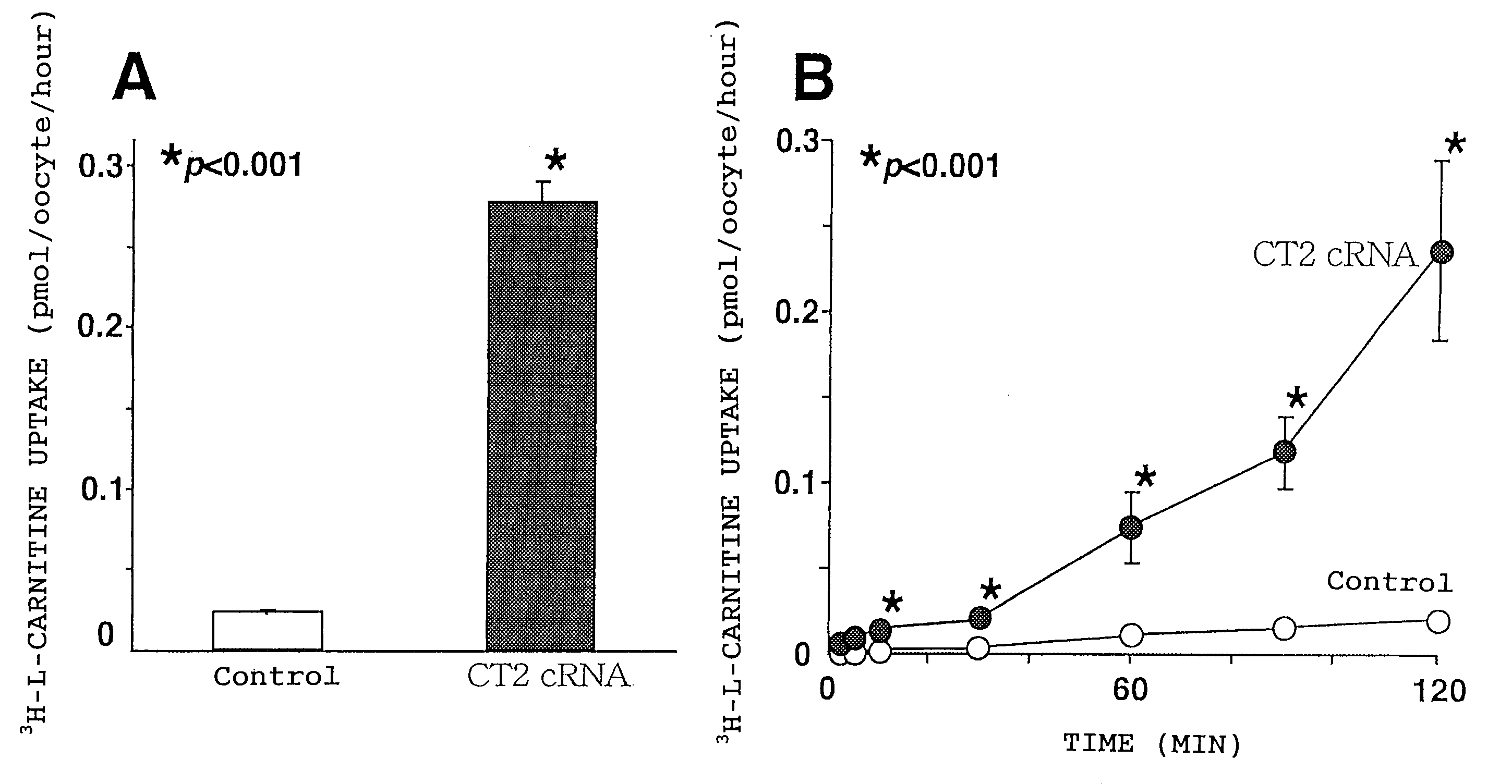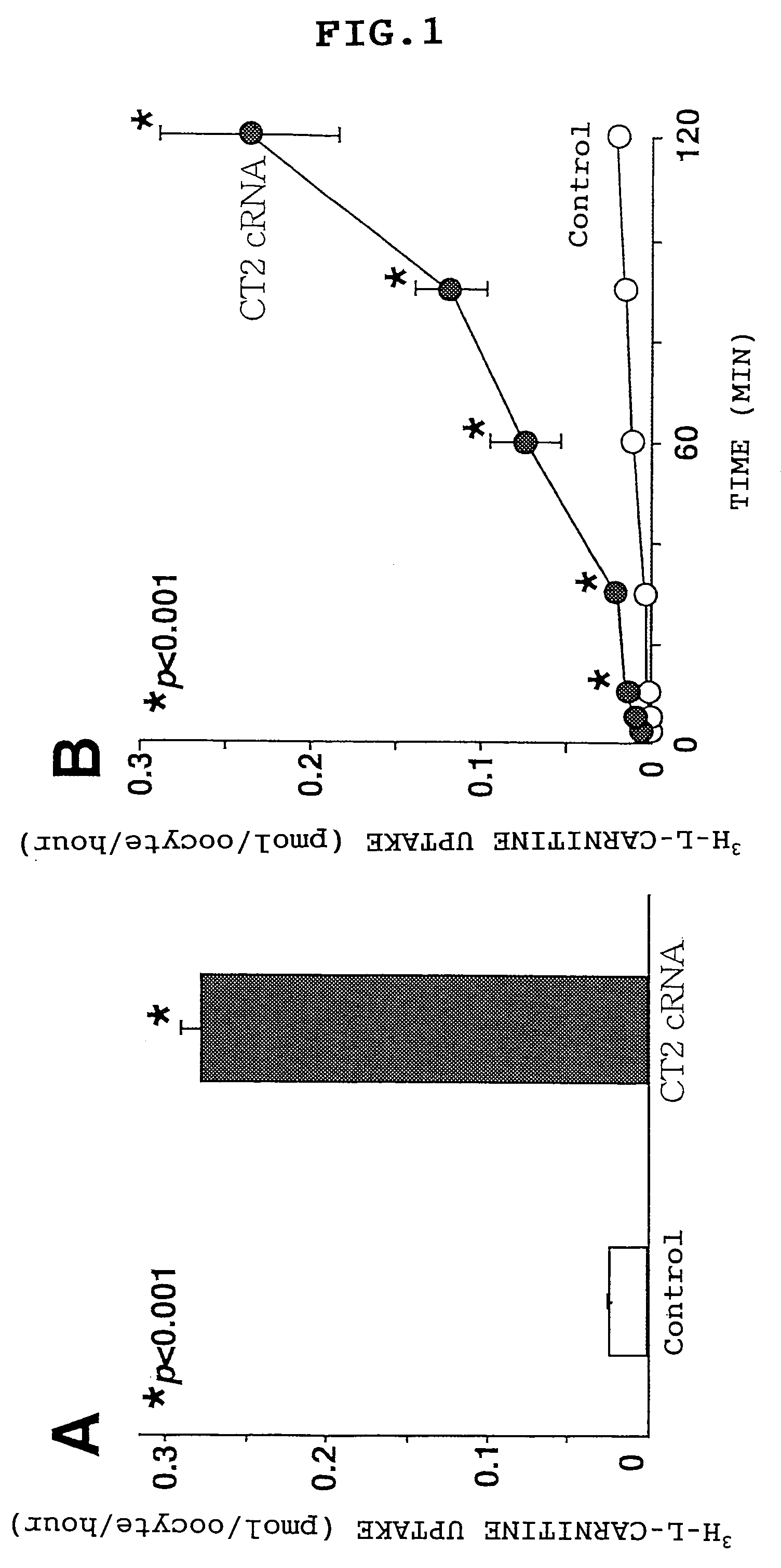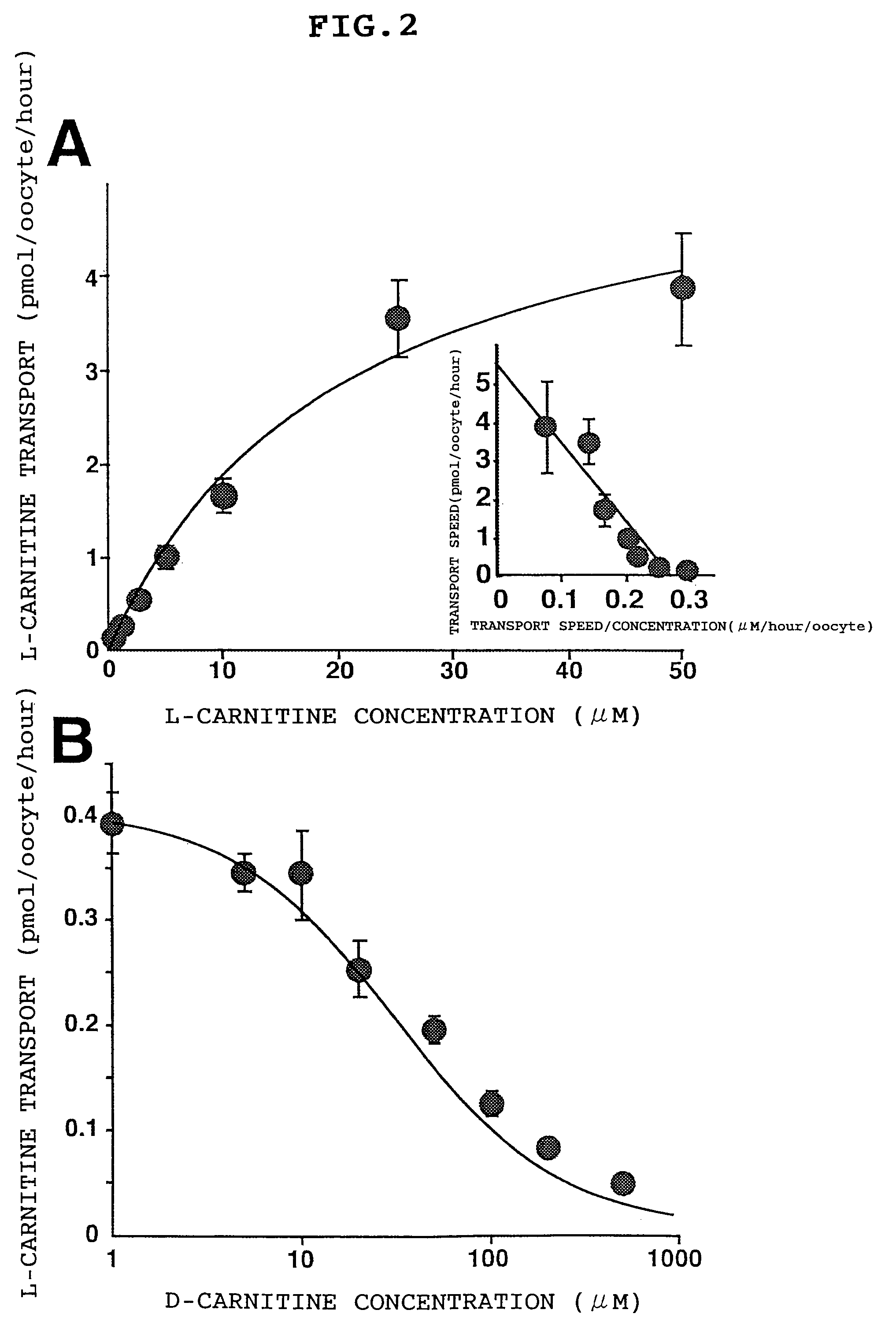Method of modulating a testicular carnitine transporter
a carnitine transporter and testicle technology, applied in the field of modulation of testicle carnitine transporters, can solve the problems of lack of fertilizability, difficulty in analysing the carnitine transport system in detail by conventional methods, and premature and low motility of testicle sperm production
- Summary
- Abstract
- Description
- Claims
- Application Information
AI Technical Summary
Benefits of technology
Problems solved by technology
Method used
Image
Examples
example 1
Isolation and Analysis of Carnitine Transporter (CT2) cDNA Specific to Testis and Epididymis
[0061]Based on base sequence information of OAT1, OAT2, OAT3, OAT4, and CT1, which were isolated by some of the inventors, publicly disclosed EST database was searched. As a result of this search, a novel cDNA fragment AA778598 which is homologous with OAT1, OAT2, OAT3, OAT4, and CT1 was obtained.
[0062]By using a probe labeled AA778598 with32P, a human testis cDNA library prepared in advance was screened. Hybridization was conducted in a hybridization solution at 50° C. all day and night, and then a filter film was washed with 0.1×SSC (standard saline citrate) / 0.1% SDS (sodium dodecyl sulfate) at 50° C. Used as the hybridization solution was a buffer solution of pH 6.5 containing 50% formamide, 5×SSC, 3×Denhard solution, 0.2% SDS, 10% dextran sulfate, 0.2 mg / ml denatured sermon sperm DNA, 2.5 mM sodium pyrophosphate, 25 mM MES, and 0.01% Antifoam B (foam inhibitor; a product of Sigma-Aldrich,...
PUM
| Property | Measurement | Unit |
|---|---|---|
| temperature | aaaaa | aaaaa |
| pH | aaaaa | aaaaa |
| concentration | aaaaa | aaaaa |
Abstract
Description
Claims
Application Information
 Login to View More
Login to View More - R&D
- Intellectual Property
- Life Sciences
- Materials
- Tech Scout
- Unparalleled Data Quality
- Higher Quality Content
- 60% Fewer Hallucinations
Browse by: Latest US Patents, China's latest patents, Technical Efficacy Thesaurus, Application Domain, Technology Topic, Popular Technical Reports.
© 2025 PatSnap. All rights reserved.Legal|Privacy policy|Modern Slavery Act Transparency Statement|Sitemap|About US| Contact US: help@patsnap.com



